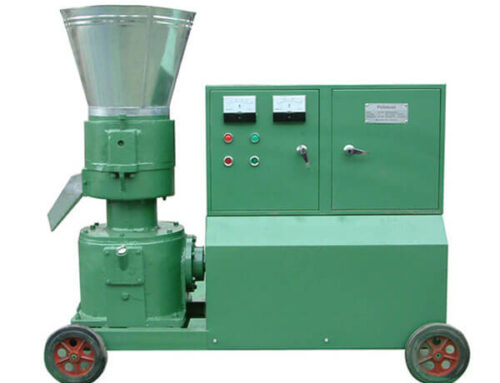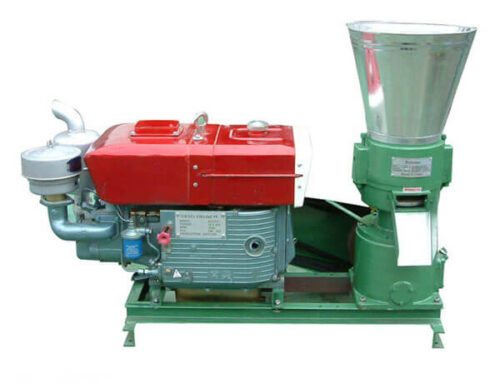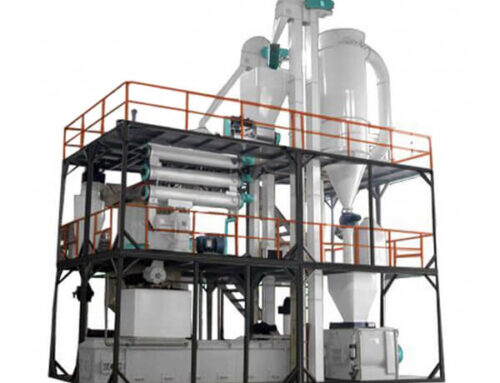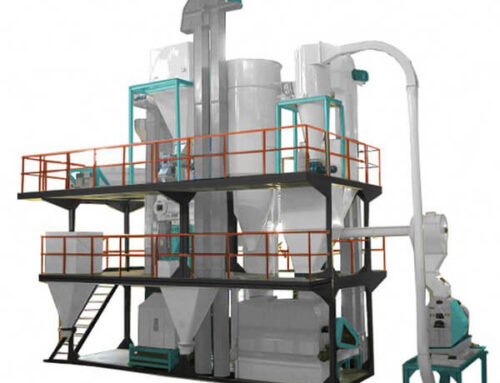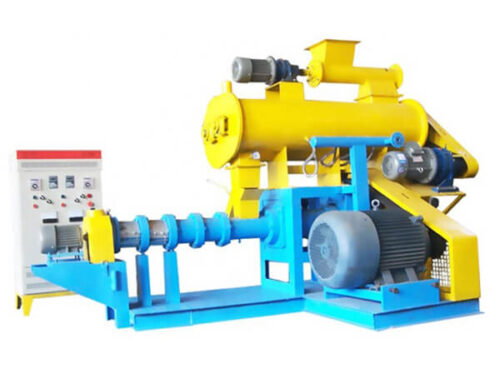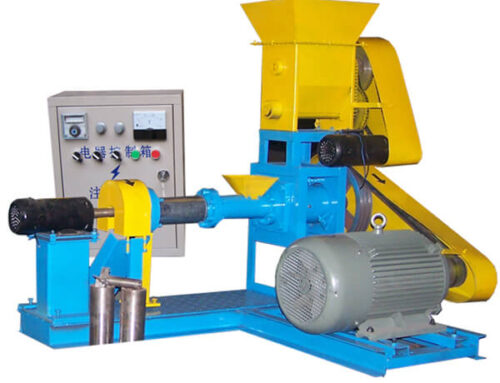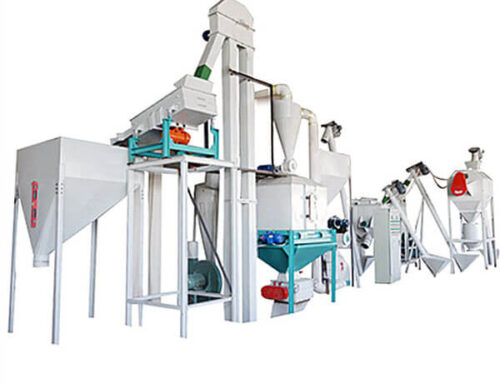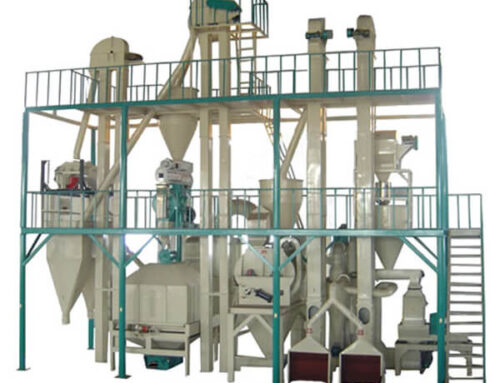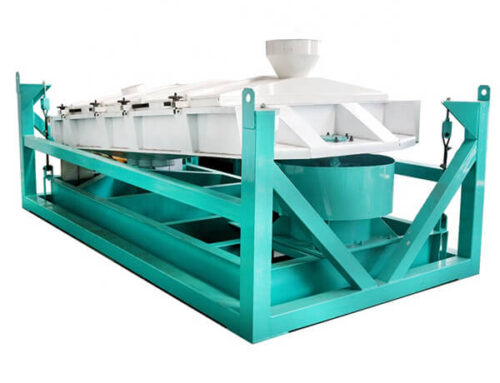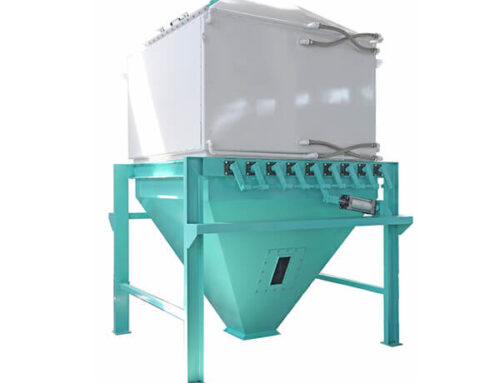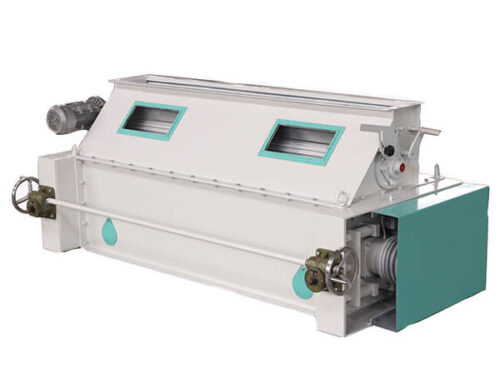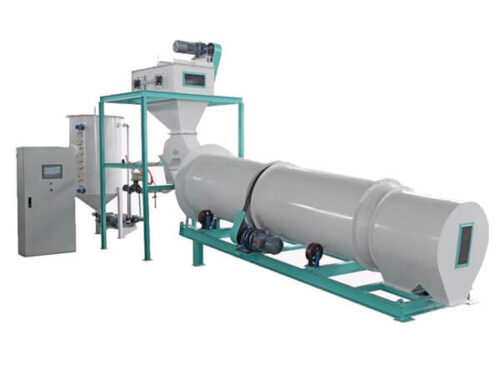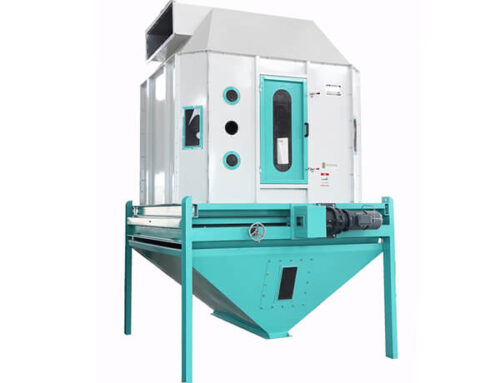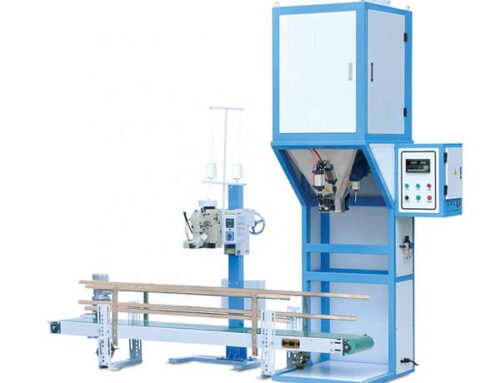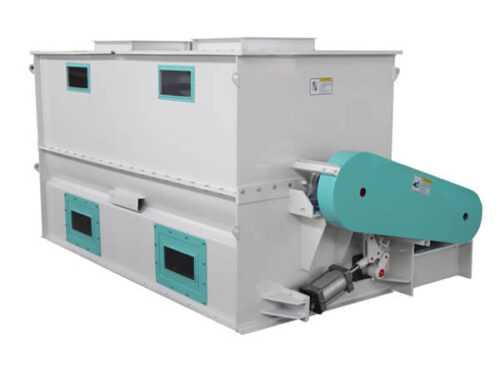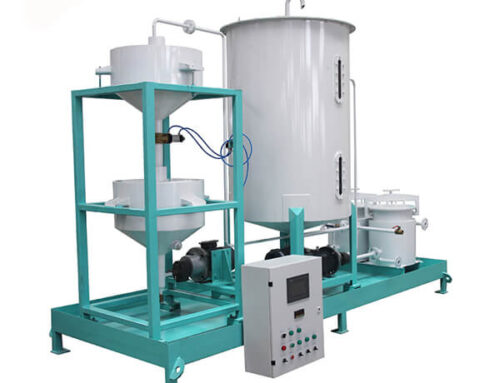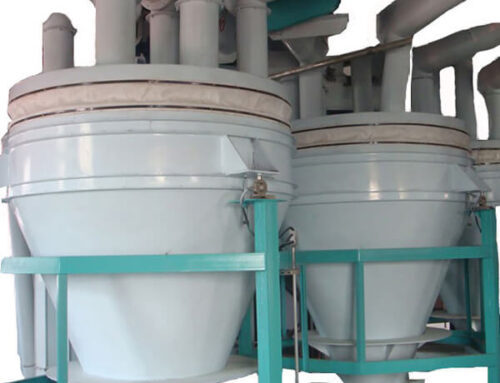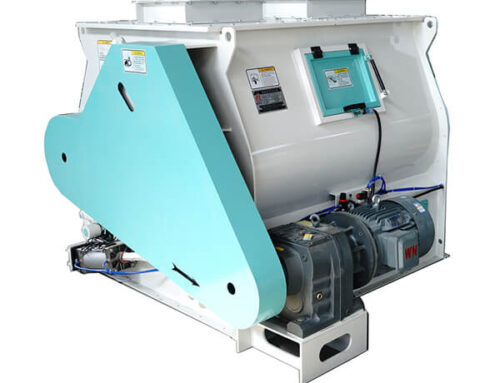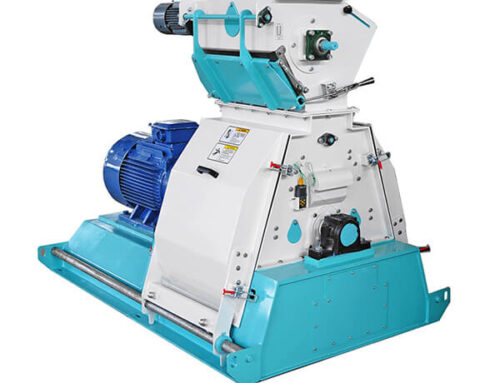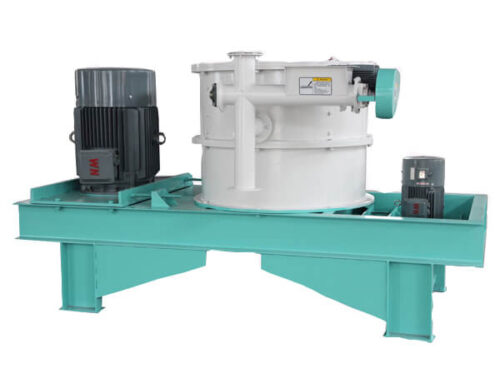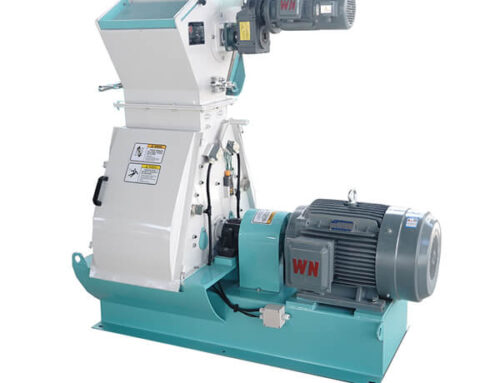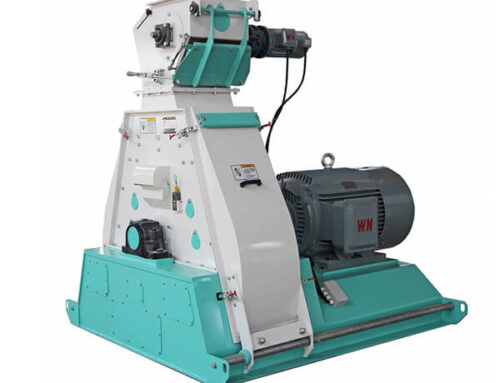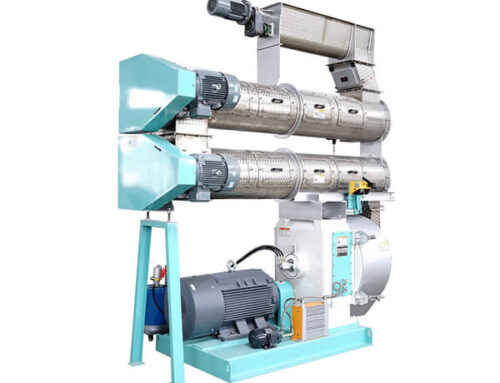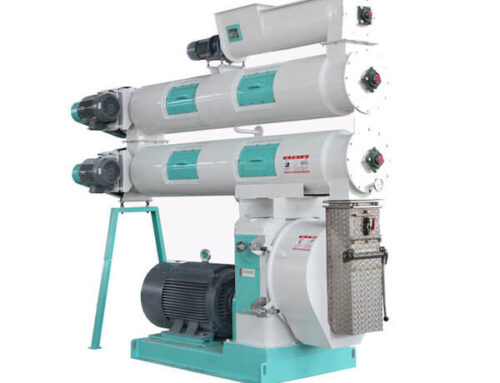How to Make Fish Feed Pellets?
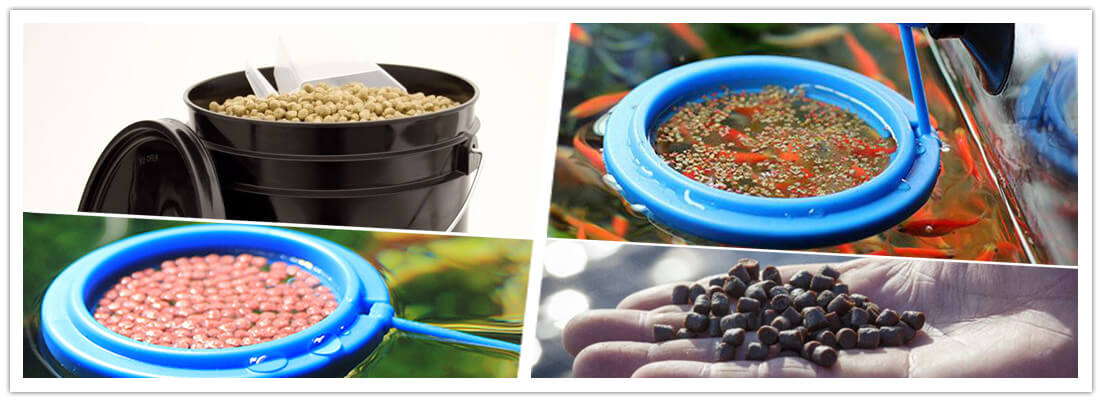
1.Material Grinding
Various kinds of raw materials should be ground to the required size by feed hammer mill. The particle size of raw material has a direct effect on the pellets making efficiency. There are two types of feed hammer mill: diesel feed hammer mill and electric feed hammer mill, which can meet your requirements for fish feed pellets making.
2.Material Mixing
Powdery feed materials need to be blended evenly to increase diet uniformity and improve the feedstuff quality. Featured by low energy consumption and high mixing accuracy, our feed mixer is widely used in feed pellets plant. Feed mixer can be equipped with an atomizing spraying system to add liquid to the materials.
3.Fish Feed Extruding
After mixing, fish feed pellet extruder can be adopted at this stage to compress feed powder into sized pellets. We have dry type fish feed extruder and wet type fish feed extruder for pelletizing. Wet type feed extruder is equipped with conditioner and can produce high-quality pellets in large capacity, so it is suitable for large fish feed factories. While dry type fish feed extruder suits for small aquatic farms.
4.Fish Feed Pellet Drying
Pellets are in high temperature and moisture content after extruding, so fish feed pellets dryer is needed to cool and dry pellets. Featured by simple structure and high efficiency, feed pellet dryer is ideal for drying.
5.Fish Feed Pellet Packing
To make pellets easy to store, transport, and sell, they should be packed properly. Pellets weighing and packing can be finished at the same time. Moreover, it can also prevent feed deterioration and thus prolong its shelf life. The pellet packing machines can largely reduce labor costs and increase working efficiency.
Advantages of Fish Feed Pellet Plant
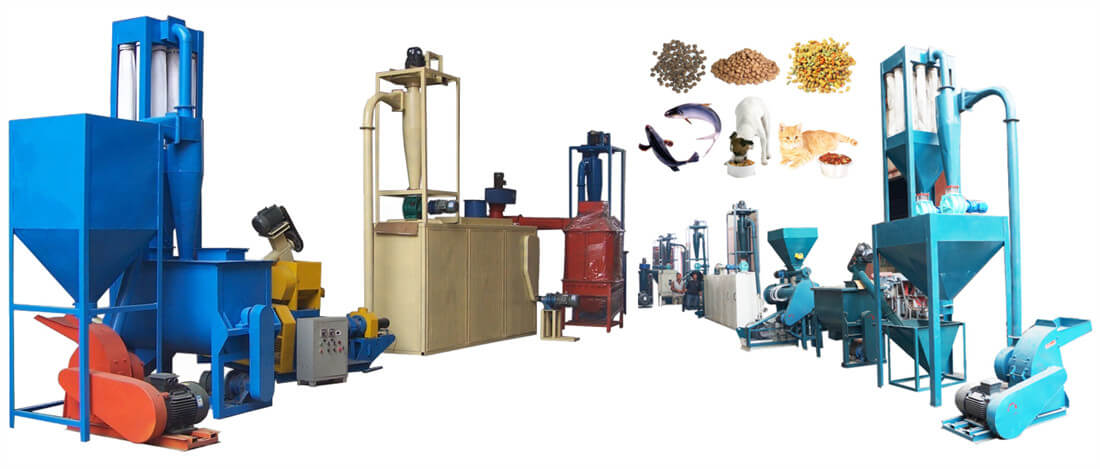
♡ Wide application. This feed pellet production line can be adopted in the production of various kinds of animal feed, such as dog, pig, rabbit, bird, cat, etc.
♡ Equipped with advanced technology, this fish feed pellet production line has high output, high efficiency, and low energy consumption.
♡ The shape and size of the final pellets can be adjusted by changing mold according to customer requirements.
♡ The reasonable structure makes it easy to assemble, ship, and install, moreover, this production line occupies less floor space.
Fish Feed Diet Formula
Grass carp feed pellets
| Ingredients | ω/% |
| rice bran | 33.5 |
| soybean cake | 30 |
| fish meal | 5 |
| bran | 10 |
| straw powder | 20 |
| salt-mixture | 1.5 |
Carp feed pellets
| Ingredients | ω/% |
| fish meal | 43 |
| soybean oilcake | 13 |
| corn gluten meal | 4 |
| clear flour | 27 |
| corn starch residue | 7.7 |
| vitamin additive | 1 |
| choline chloride | 0.3 |
| mineral additive | 1 |
| dicalcium phosphate | 3 |
Bream feed pellets
| Ingredients | ω/% |
| corn | 24 |
| corn starch | 3 |
| soybean cake | 50 |
| fish meal | 13 |
| urea | 7 |
| carboxymethylcellulose | 2 |
| gelatin | 1 |
| vitamin additive | 2 |
How Much Should I Feed?
In nature, fish eat no matter when they are hungry and food is available. If there are rich sources of food available, they will eat many times a day. While, if there is a little food source, they can go for days between meals. Therefore, fish will eat no matter when they have a chance and will gobble food up even if they are not hungry. So do not overfeed.
Then how much should I feed? In fact, this frequency will vary based on the type of fish. Generally speaking, most fish do quite well only once a day and this method is also to be recommended. However, it is not the only way to keep it healthy. Some people also feed every other day, while some feed twice a day.
As to the amount of feed fish, the traditional recommendation is that if you only have one fish feed as much as the fish can finish within 10 to 30 seconds. Which means only 3-5 pellets for one fish. Pellet size as big as the fish can swallow whole is the best. If you have a tank full of fish, feed only as much as they can finish within one minute. At the end of the feeding, there should be no leftover, if there is leftover to be ignored by fish, that is overfeeding and must decrease the amount next time.
Introduction to Fish Feed Market
Being the major expenditure of fish farmers, feed occupies 40-50% of the production cost. It is estimated that the global aquafeed market will reach 82,390.5 KMT by 2018, growing at a CAGR of 11.7% from 2013 to 2018. During the past few years, the global aquafeed market has grown exponentially, and it is expected that this trend will continue for the following years. The reason for this phenomenon can be the growth of the aquaculture industry, increased consumption of fish and seafood, increasing income of expanding middle class, and flexibility in the use of secondary raw materials. Asia-Pacific and Europe together occupy over 70% of the global aquafeeds consumption and became the leading consumer. Among aquafeed consumption, fish occupies the largest. Recently, the use of fish feed pellets becomes more and more popular for its own characteristics.

